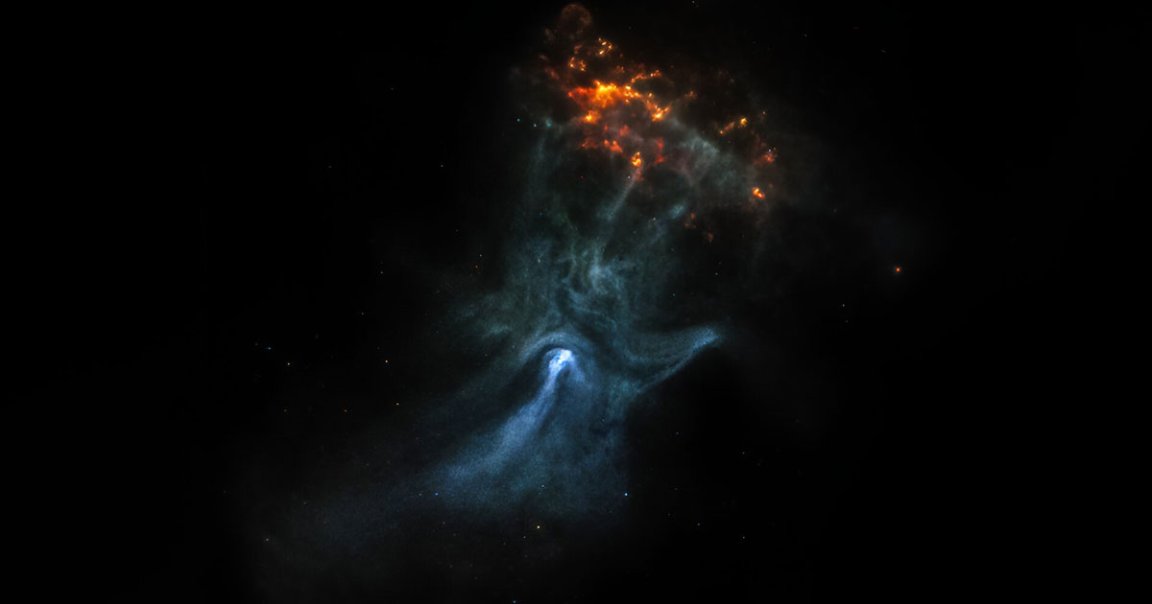
Ghost in the Hand
Astronomers have spotted what looks just like a ghostly skeleton hand floating in outer space some 16,000 light-years from Earth.
A spooky image taken by NASA’s newest X-ray telescope, the Imaging X-ray Polarimetry Explorer (IXPE), shows a pulsar wind nebula dubbed MSH 15-52 casting shadowy finger-like protrusions in the form of energetic particles, forming a distinct shape of a ghostly hand.
Pulsars are rapidly spinning neutron stars, the extremely dense remains of collapsed supergiant stars. They emit strong magnetic fields, causing them to shoot highly energized particles out in jets, forming a pulsar wind nebula.
In the case of MSH 15-52, these jets formed the spitting image of a ghostly hand — a creepy apparition fit for Halloween.
“The charged particles producing the X-rays travel along the magnetic field, determining the basic shape of the nebula, like the bones do in a person’s hand,” said Stanford University’s Roger Romani, lead author of a new paper published in the Astrophysical Journal, in a statement.

Spooky Fingers
NASA’s IXPE focused its instruments on the nebula for a whopping 17 days, representing the longest observation of a single object since it was launched in 2021, per NASA.
“We’re all familiar with X-rays as a diagnostic medical tool for humans,” said co-author and Stanford physics PhD Josephine Wong in the statement. “Here we’re using X-rays in a different way, but they are again revealing information that is otherwise hidden from us.”
The observation sheds new light on how mingling magnetic fields in pulsar wind nebulas interact with their surroundings, getting a big initial boost around the hand’s “wrist,” before being driven to areas where these magnetic fields are more uniform.
“We’ve uncovered the life history of super energetic matter and antimatter particles around the pulsar,” said co-author and Stanford postdoctoral research fellow Niccolò Di Lalla. “This teaches us about how pulsars can act as particle accelerators.”
More on nebulas: James Webb Spots Numerous Pairs of Planets, Hanging Out With No Stars